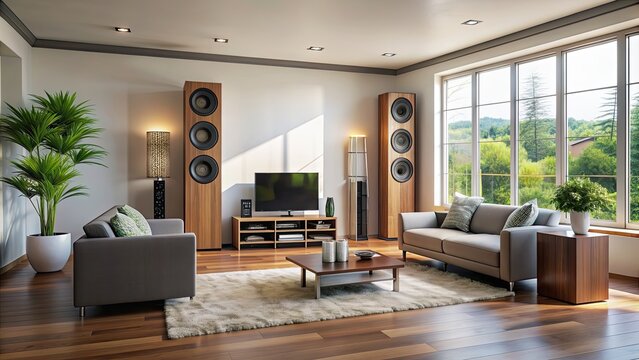When it comes to creating the perfect soundscape in your home, stereo system speakers play a pivotal role. Whether you’re an audiophile looking for the highest sound fidelity or just someone who loves listening to music, understanding home audio systems can elevate your listening experience. Let’s delve into what stereo speakers are, how they work, and how to choose the right ones for your needs.
What are Stereo System Speakers?
Stereo system speakers are audio devices designed to produce sound in a two-channel format—left and right channels. This setup mimics the natural experience of hearing sounds in the real world, where different sounds come from different directions. Stereo sound is the most common audio format for home systems, music, movies, and gaming. Stereo speakers aim to recreate this effect by delivering separate audio signals to each speaker, providing a sense of space and directionality in the sound.
There are two primary types of speakers used in stereo systems:
- Bookshelf Speakers: Compact, versatile, and suitable for most home environments, bookshelf speakers are often placed on stands or bookshelves. They’re known for their balanced sound and ability to fit into smaller spaces without sacrificing audio quality.
- Floorstanding (Tower) Speakers: Larger and more powerful, these speakers are designed for high-end audio experiences and can produce deep bass and a more expansive soundstage. They are ideal for larger rooms or dedicated listening spaces.
Components of Stereo System Speakers
Stereo speakers are made up of several key components that work together to produce sound:
- Woofers: These are the drivers responsible for producing low-frequency sounds, such as bass. Woofers are larger in size and are crucial for giving music depth and fullness.
- Tweeters: These drivers handle high-frequency sounds (treble), such as cymbals, vocals, and higher-pitched instruments. Tweeters are typically smaller and designed for precision.
- Midrange Drivers: These drivers fill the gap between the woofer and tweeter, handling the middle frequencies, including much of the vocal and instrumental range.
- Crossovers: The crossover is a crucial component that divides the audio signal into different frequency bands that are then sent to the appropriate drivers (woofers, tweeters, etc.). A high-quality crossover ensures a smooth, seamless transition between these frequencies.
- Enclosures: The cabinet or enclosure of the speaker plays a significant role in how the sound is produced and projected. Well-constructed enclosures reduce distortion and enhance bass response.
How Stereo System Speakers Work
When audio is played, the stereo system sends electrical signals to the speakers. These signals are then converted into sound by the different drivers:
- The woofers move back and forth to produce lower sounds.
- The tweeters vibrate to generate high-frequency sounds.
- The midrange drivers handle the middle frequencies, ensuring that vocals and other instrumental sounds are clear and balanced.
This system of drivers and the enclosure ensures that the sound is full-range, with each frequency being accurately reproduced to provide a rich listening experience.
Factors to Consider When Choosing Stereo System Speakers
Choosing the right speakers for your stereo system involves considering several factors, including:
- Room Size: Larger rooms benefit from more powerful speakers like floorstanding models, while smaller rooms are better suited for bookshelf speakers.
- Power Handling: The speaker’s power handling capacity should match the output of your amplifier. If the speakers can’t handle the power, they may distort or even get damaged.
- Impedance: Most stereo system speakers have an impedance of 4 to 8 ohms. Ensuring compatibility with your amplifier is important for optimal performance.
- Sensitivity: Speaker sensitivity indicates how efficiently a speaker converts power into sound. A higher sensitivity rating means the speaker can produce more volume with less power, which is crucial if you’re working with a lower-powered amplifier.
- Sound Quality: Ultimately, the sound quality is the most important factor. Look for a speaker that reproduces sound with clarity, detail, and balance across the frequency range.
- Design and Aesthetics: Stereo speakers come in various designs. Choose one that complements your home décor and fits the space where you plan to place them.
